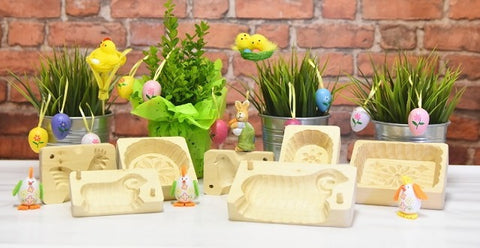Polish Christmas customs are both very beautiful and meaningful...
The preparation for Christmas begins many days before the actual celebration. Nearly everyone cleans their houses thoroughly, both inside and outside. It is believed that if a house is dirty on Christmas Eve, it will remain dirty all next year.

It is also strongly believed that whatever occurs before and during Wigilia has an enormous impact on the coming year. So, if an argument arises, a troublesome year will follow. In the morning, if the first visiting person is a man, it means good luck; if the visitor is a woman, one might expect misfortune. Everyone, however, is glad when a mailman comes by, for this signifies money and success in the future. To assure good luck and to keep evil outside, a branch of mistletoe is hung above the front door. Finally, old grudges should end. If, for some reason, you do not speak with your neighbor, now is the time to forget old ill feelings and to exchange good wishes.

Christmas and Santa Claus Day are not celebrated at the same time in Poland, but rather three weeks apart. Santa Claus, called Mikolaj, Day is celebrated on December 6th, the name day of St. Nicholas. This is when St. Nicholas visits some children in person or secretly during the night. Some people believe however that right before Wigilia, Santa Claus comes once again to place the gifts under the Christmas Tree.

Many people believe that additional seat kept on the Wigilia table is a way to reunite with those who we cannot be with during Christmas supper. It can be for deceased relatives or friends who supposedly come during Christmas Eve to eat the food with us. On the other hand this symbolic additional seat represents Polish hospitality. No one should be left alone at Christmas, so strangers are welcomed to the Christmas supper. This is to remind us that Mary and Joseph were also looking for shelter.

During Wigilia many Poles prepare 12 meatless dishes. Meat is not allowed during the whole day as the result of a long-time Church mandate that a strict fast and abstinence be observed on this day before Christmas. Although the Church laws have been revised and permit meat to be eaten on this day, the traditional meal remains meatless. Items that would normally be included in a traditional Wigilia menu include red borsch with uszka, boiled potatoes (kartofle), pickled herring (sledzie), carp fish, pierogi, beans and sauerkraut (groch i kapusta), a dried fruit compote, babka, oplatek, assorted pastries and many other delicious things depending on a region family customs.

One of the most beautiful and most revered Polish customs is the breaking of the oplatek. The use of the Christmas wafer is not only by native Poles in Poland but also by people of Polish ancestry all over the world. This is such a deeply moving moment that often tears of love and joy are evoked from the family members who are breaking this symbolic bread. The Oplatek is a thin, unleavened wafer similar to the altar bread in the Roman Catholic Church. It is stamped with the figures of the Godchild, the blessed Mary, and the holy angels. The wafer is known as the bread of love and is often sent by mail to the absent members of the family.
On Wigilia, the whole family gathers and waits impatiently for the appearance of the first star. With its first gleam, they all approach a table covered with hay and a snow-white tablecloth. A vacant chair and a place setting are reserved for an unexpected guest, always provided for in hospitable Polish homes. The father or eldest member of the family reaches for the wafer, breaks it in half and gives one half to the mother. Then, each of them breaks a small part from each other's piece. They wish one another a long life, good health, joy and happiness, not only for the holiday season, but also for the new year and for many years to come. This ceremony is repeated between the parents and their children as well as among the children; then, the wafer and good wishes are exchanged with all those present, including relatives and even strangers. When this activity is over, they all sit down and enjoy a tasty though meatless supper, after which they sing koledy (Christmas carols and pastorals) and open the presents until time for Pasterka ("the Mass of the Shepherds").
At midnight on Christmas Eve animals are believed to speak with a human voice.
Christmas Day, called the first holiday by the Poles, is spent with the family at home. No visiting, cleaning, nor cooking are allowed on that day; only previously cooked food is heated. This is a day of enjoyment, for Jesus was born.
St. Stephen's Day is known as the second holiday. This is a day for visiting and exchanging Christmas greetings with friends and family. When night begins to fall, you can hear stamping and jingling, followed by Christmas carol singing outside. Carolers begin their wandering from home to home. Herody, a popular form of caroling, is a live performance usually played by twelve young boys. Dressed in special costumes, they include King Herod, a field marshal, a knight, a soldier, an angel, a devil, death, a Jew, Mary, shepherds, and sometimes the Three Kings and an accordionist. They sing pastoral songs and carols, and when let into a house, perform scenes from King Herod's life. Oration and songs vary and depend upon to whom they are being addressed: the owner of the house, a young woman about to be married, a widow, etc. At the conclusion, the performers are offered refreshments and some money. Also popular is caroling with a crib (szopka) and with a star. Usually, those are items are carried by three caroling teenagers. They, too, are given some money.












